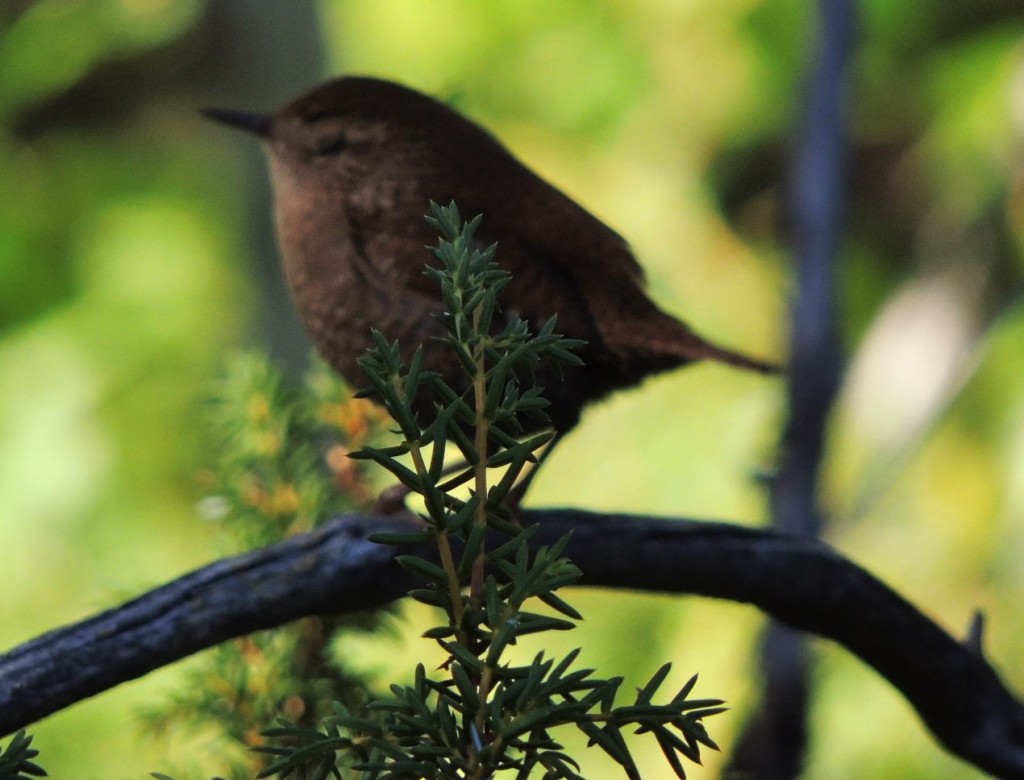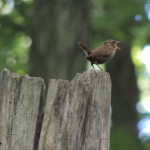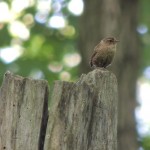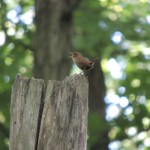14 December 2014. Burlington ON. I walked a long muddy creek-side trail this morning resolving to repeat the route on a regular basis and record all birds seen and heard, tallying individual numbers as well as species. I find it more rewarding doing this sort of thing, I call it project-birding, studying, observing and recording birds as part of a greater effort rather than just list-ticking or aimlessly wandering. If my resolve holds, it will be a mini-study that will not only get me out of the house, but should also shed light on changes in the winter species mix from now until spring.
The day was overcast, dank and just a touch above freezing, we’d had drizzle earlier this morning and melting snow made it soggy underfoot; a gloomy December day.
My Bird of the Day, a single Winter Wren, was found towards the end of the walk. It was poking through a thick tangle of roots, branches and dried grasses in search of food. Dense piles of debris, upturned root-balls or tiny crevices are almost the exclusive preserve of Winter Wrens; most other birds are much too large. If they have to fly they do so in short bursts from one deeply inaccessible spot to another. They’re tiny, about the size (and shape) of a golf ball, but much more interesting.
Our Winter Wren used to be found more or less right around the temperate northern hemisphere, from coast to coast across North America and straddling the entire expanse of Eurasia. Recently, skeptical scientists, doubting that one species could possibly be so widespread, took a closer look and spoiled all the fun. They have decided that henceforth there are really three separate (though virtually identical) species, so now there’s the Eurasian Wren and, in North America, the Winter Wren and Pacific Wren.
Wrens are a New World family so undoubtedly the ancestor of all of them originated in North America. But the question is, did it the precursor species spread westward into Eurasia across the Bering Straits, or did it make its way east across the Atlantic somehow; or both? There are no answers to this yet, but whatever its origins it is a very successful creature.

For the most part, my other observations this morning were pretty much as expected: Black-capped Chickadees, White-breasted Nuthatches and Mallards made up the majority of birds seen. A small group of Blue Jays became noisily agitated about something out of my line of sight and a pair of American Crows likewise started harassing the top of a White Pine, probably an an owl or hawk got them excited.
I enjoyed watching a large group of Slate-colored Juncos and American Tree Sparrows working over the seed-heads of a large expanse of faded goldenrod and a two male Northern Cardinals seemed to want to chase each other around but lacked conviction.
I’ve added a few of pictures of Winter Wrens from summer days when they were more inclined to show themselves, particularly the singing one in the gallery above. I was able to use the video feature on my camera to capture some of its exuberant song, click this link to see and hear it.


